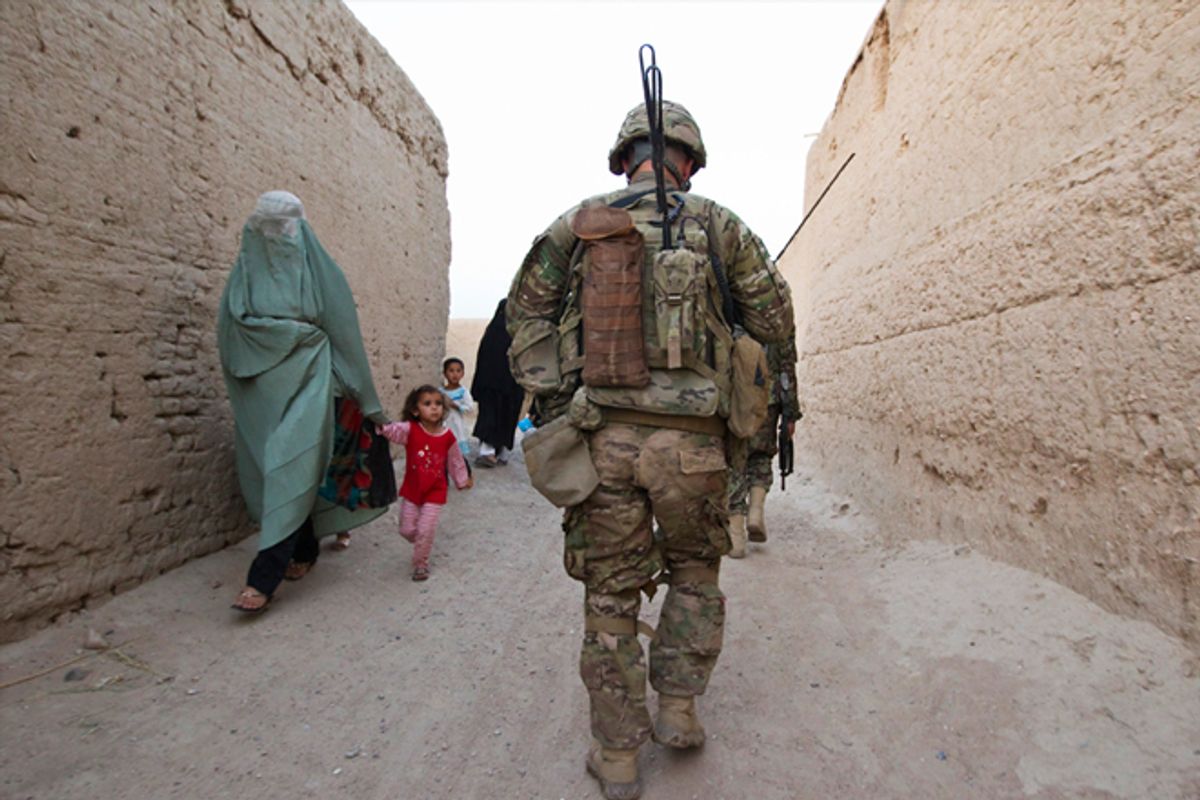 In October 2001, George W. Bush told the country he was sending the American military to Afghanistan in order to "bring justice to our enemies." It's safe to say support for the war would not have been as nearly unanimous as it was had he said, "Oh, and by the way, our troops are going to be fighting there for the next 13 years." But if all goes according to plan and Barack Obama follows up on his pledge to bring them home by the end of 2014, that's how long the Afghanistan war will have lasted.
In October 2001, George W. Bush told the country he was sending the American military to Afghanistan in order to "bring justice to our enemies." It's safe to say support for the war would not have been as nearly unanimous as it was had he said, "Oh, and by the way, our troops are going to be fighting there for the next 13 years." But if all goes according to plan and Barack Obama follows up on his pledge to bring them home by the end of 2014, that's how long the Afghanistan war will have lasted.
We thought it would be useful to take a brief look at some of the basic facts of our involvement there. Last spring, Afghanistan passed Vietnam (measured by the time between the Gulf of Tonkin resolution in 1964 and the departure of the last Americans from Saigon in 1975) to become America's longest war.

To date, we've spent over half a trillion dollars in Afghanistan, a figure that includes only the direct yearly costs for both military expenditures and civilian aid. It doesn't include the cost of replacing materiel and weapons used in Afghanistan, nor the long-term costs of caring for the thousands of servicemembers who were wounded there. Those factors will add hundreds of billions of dollars to the tally in the years to come. And today, keeping a single servicemember in Afghanistan costs upward of a million dollars per year.

Nevertheless, the number of troops serving in Afghanistan has been lower than in most of our past conflicts, including Iraq. Until President Obama began winding down the Iraq War, the number of troops there typically averaged between 140,000 and 150,000. On the other hand, when Obama took office, the number of troops in Afghanistan had never exceeded 40,000. After he undertook a "surge" of troops to Afghanistan, the number maxed out at 100,000 during the summer of 2011. Last fall it came down to its current level of 68,000; plans for the ultimate drawdown that will take place over the next two years have not been finalized.

For all their horrors, our current conflicts have been far less deadly than the wars of America's past. Over 100,000 Americans died in World War I, over 400,000 in World War II, 36,000 in Korea, and 58,000 in Vietnam. But advances in medicine, communication, and transportation—not to mention the asymmetric nature of the conflicts—have kept casualties significantly lower in Iraq and Afghanistan.
That's no comfort, of course, to the thousands of men and women killed and wounded in those wars, nor to their families and friends. Last August, the number of Americans killed in Afghanistan passed 2,000.



Shares